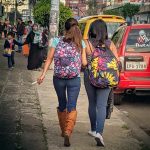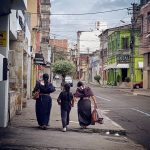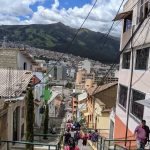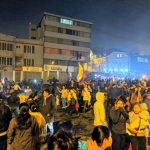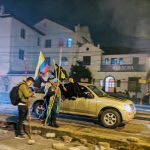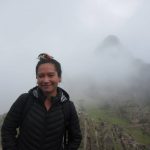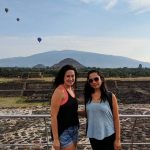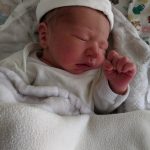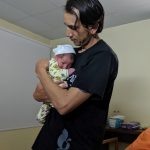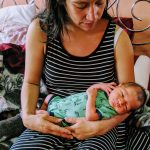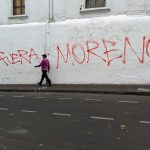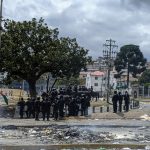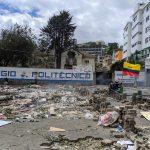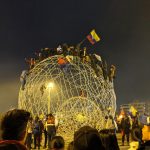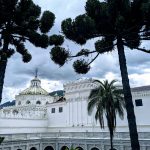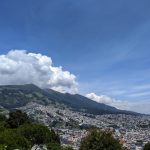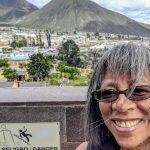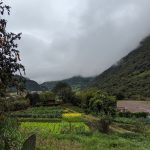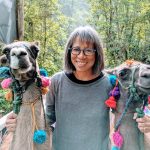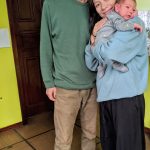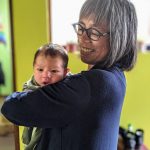The difficulties of learning Spanish, the ease of being a foreigner, the sorrow of saying goodbye
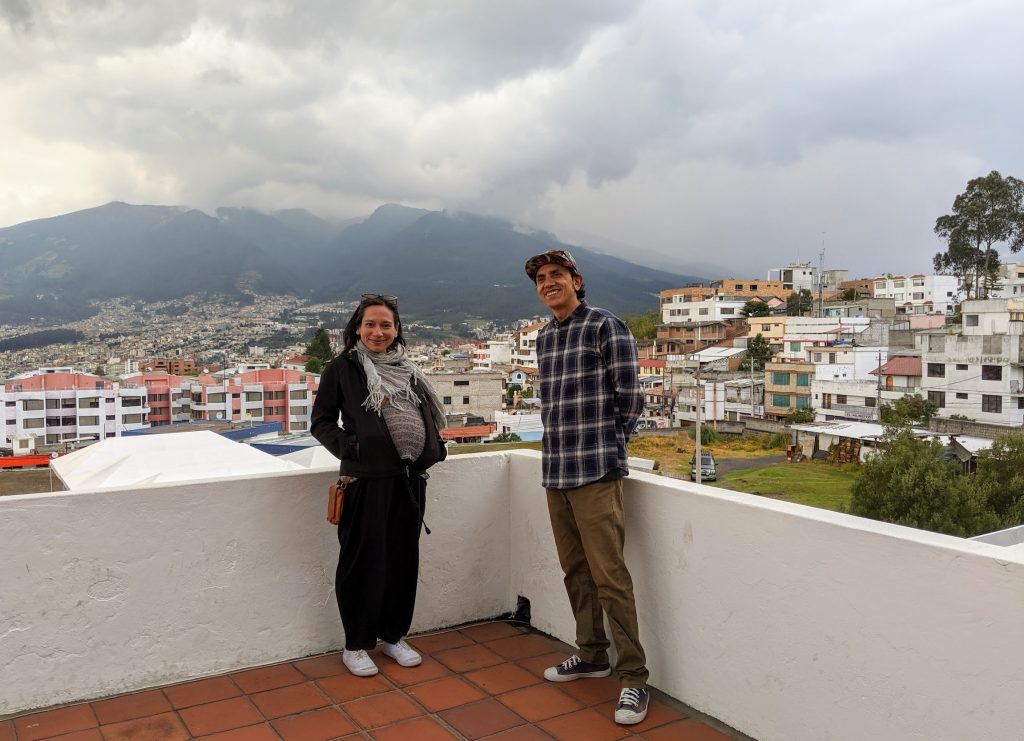
When you spend five weeks in a city not your own, sometimes its heartbeat can become yours.
I was a visitor and, in many instances, a tourist in Quito. Not to mention a habitual eavesdropper on a language in which I have yet to gain fluency. Every day I walked
among Ecuatorianos, straining to discern snippets of conversations around me, trying to accustom my ear to a language I’ve heard for much of my life, but which has eluded me like a linguistic sylph. Despite this deficiency and other markers of my foreignness, such as my cargo shorts, I felt at ease and as much at home as an outsider can feel.
I lived in the spare bedroom of the apartment of my daughter Ana and her partner Daniel. I was there to await the birth of their baby, my grandson Ilio. In their Spanish-speaking household, I was also a hoverer, an observer, an extranjera. And yet I felt at ease there, too, as if I belonged in a not-belonging kind of way.
I arrived in Quito in what turned out to be the final days of nationwide manifestaciones or demonstrations. Following Daniel’s lead, I banged the lid of a pot from the balcony of the apartment during the caserolazo to protest President Lenin Moreno’s 24-hour curfew. I watched as people left their homes to bang their pots and pans in the streets in defiance of that curfew.
The next night, I witnessed the jubilant celebrations when Moreno conceded to the righteous demands of the people. And the day after, I made my way through throngs of students armed with brooms to sweep up the debris from eleven days of protests as I headed to my first day of Spanish classes.
Spanish came into my U.S. family with my grandmother, who immigrated from Mexico in the years after the Mexican Revolution. Spanish ended in my family with my mother’s generation, which seemed to view it as expendable in their American lives. Spanish had been something I’d heard throughout my childhood but was given to understand that it was not for me to have. And even though I took Spanish classes in junior high and high school, it was with this psychological barrier that Spanish was not part of who I was, that the language wasn’t mine to learn, that it was beyond my reach.
But my two daughters with their agile brains, determination to succeed, and confidence in their abilities have both achieved fluency. They have lived and traveled in Spanish-
- Natalie in Mexico
- Ana in Peru
- Natalie and And meeting up in Teotihuacan
speaking countries, communicating deftly in an acquired tongue that is also their heritage. I want to be like them. More than ever, now that Daniel is in our family. And though Ilio will be bilingual, I want to speak to him in both his languages.
Since my recent retirement, I have this year spent two weeks in Mexico, three weeks in Spain, and five weeks in Ecuador, each time making incremental progress in understanding and speaking Spanish. They’re increments that may seem undetectable and maybe even negligible, but I know they exist. Of course, there were all those times when words traveled past me so fast, not a single one registered and I had to stammer apologies through my befuddlement.
The lovely thing about taking Spanish classes in a Spanish-speaking country is learning from a local eager to share her culture. Jenny, a lifelong Quiteña, whose rapid pace of speaking I could miraculously follow, suggested places for me to visit. I did go to the Mercado Santa Clara, but did not try the yahuar locro, which in Spanish is called sangre  de borrego, which in English is sheep’s blood. I went to the Abya Yala museum, had a private tour in Spanish, and asked to watch the video on how chicha is made, which you can and should watch here to see how hard these women work. Totally worth the six minutes. With Daniel and Ana, I went to see the paintings of Oswaldo Guayasamín in La Capilla del Hombre and tour the house he lived in where we saw his portraits of Mercedes Sosa and other contemporaries. We watched a video of him painting the Spanish guitarist Paco de Lucia, which I recommend you watch, too. Again, totally worth the five and half minutes to watch this master at work.
de borrego, which in English is sheep’s blood. I went to the Abya Yala museum, had a private tour in Spanish, and asked to watch the video on how chicha is made, which you can and should watch here to see how hard these women work. Totally worth the six minutes. With Daniel and Ana, I went to see the paintings of Oswaldo Guayasamín in La Capilla del Hombre and tour the house he lived in where we saw his portraits of Mercedes Sosa and other contemporaries. We watched a video of him painting the Spanish guitarist Paco de Lucia, which I recommend you watch, too. Again, totally worth the five and half minutes to watch this master at work.
Ilio arrived at the halfway point in my stay.
After the four days of manifestaciones and two weeks of Spanish classes and sightseeing, my routine shifted. As Ana and Daniel focused on new parenthood and adjusted to new sleep patterns, I embraced a new existence that interspersed errands and meal preparation with walks in the neighborhood and nearby parks (though I later set aside several days for excursions outside of Quito). By this time, the city had become familiar to me: the walk through Parque El Ejido, the grocery shopping I did at Tia’s and SuperMaxi, the little corner markets where I bought eggs and produce, the lavanderia, the almost daily thunderstorm, the best places to hail a taxi (almost anywhere, really). With each passing day, I felt more connected to the apartment, the neighborhood, the city. And each passing day brought me closer to the end of my stay. I could almost hear the soft little rip in my heart.
Whenever I rode in a taxi, the always polite and friendly driver, tipped off by my accent, would ask me where I was from and why I happened to be in Quito. So I told every one of them the story of how Ana had been living in Ecuador and met Daniel, a good and kind man with a brilliant smile, and now they had a baby named Ilio, and I showed them pictures as if this story crisscrossing the city in all these taxis would somehow keep some part of me in Quito.
It’s been a week and a half since my return. With each day that passes, that ache for Quito lessens. But it will never completely go away and I don’t want it to.
